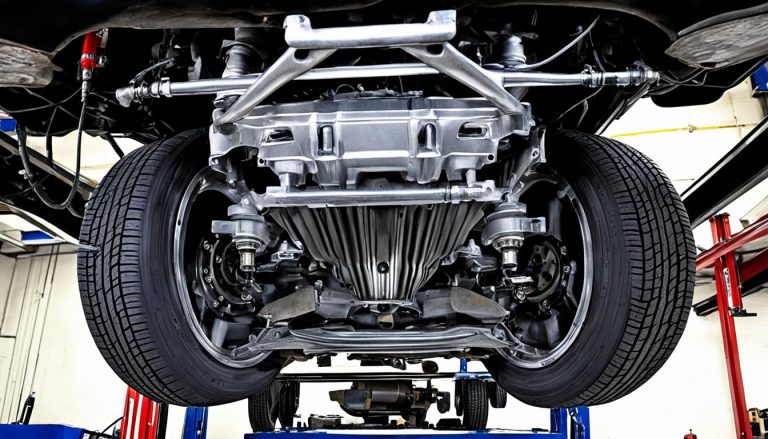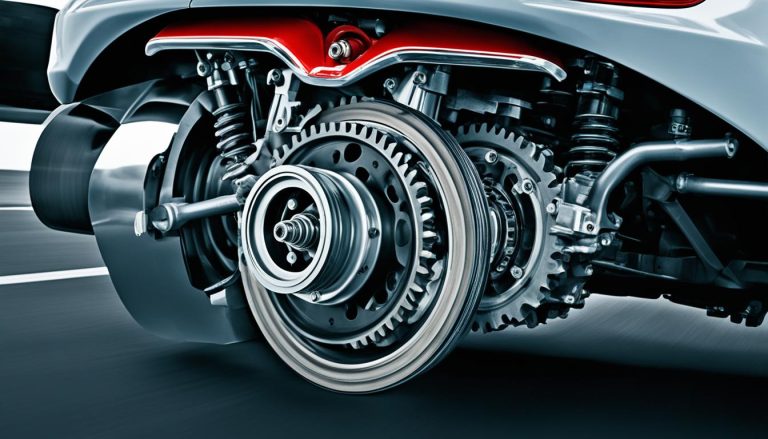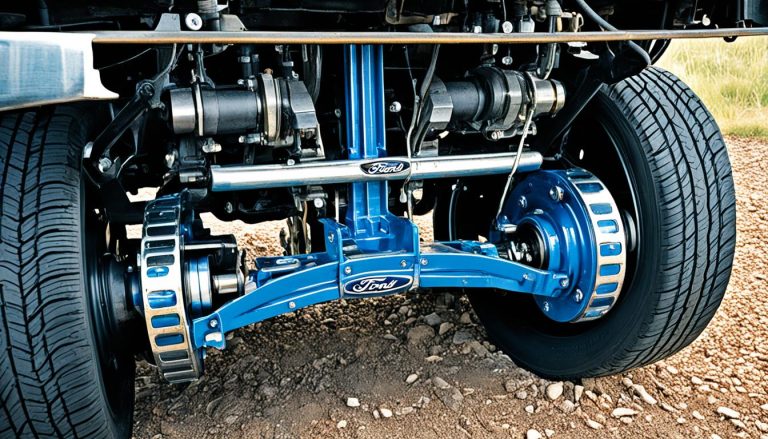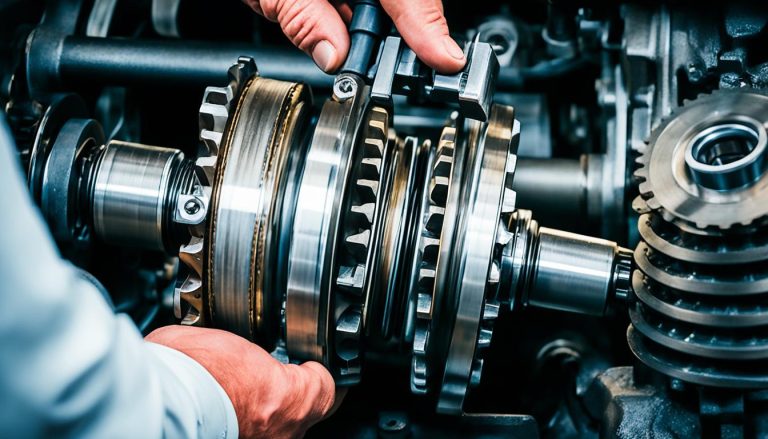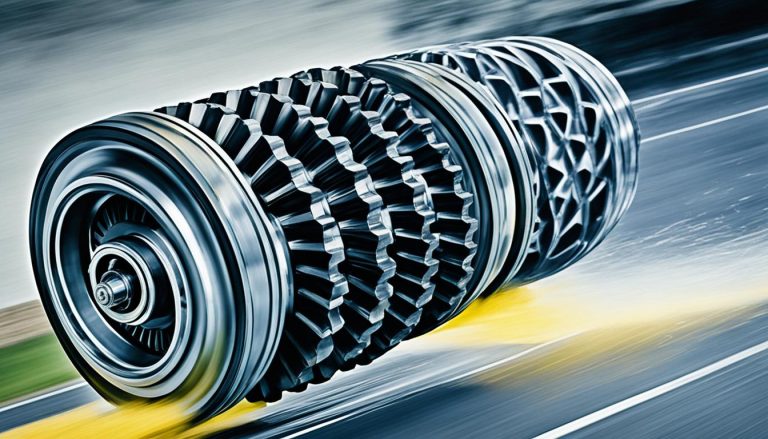Common Ford Ranger Limited Slip Differential Issues
If you’re a Ford Ranger owner, the prowess of your vehicle’s limited slip differential (LSD) can be the linchpin for exceptional performance, especially when dealing with tough terrains or slippery conditions. But, like any mechanical component, the LSD is not impervious to problems. Understanding the Ford Ranger LSD problems and how to tackle common limited slip differential problems Ford Ranger models face is essential for maintaining your truck’s rear end integrity.
Troubleshooting limited slip differential Ford Ranger challenges might seem daunting at first. You might hear differential noise, or worse, experience clunking that can signal potential failure. Don’t fret though, as recognizing and addressing these Ford Ranger rear end issues promptly can save you both time and money, ensuring that your adventure-ready vehicle remains as reliable as ever.
Key Takeaways
- Become familiar with symptoms of LSD problems in your Ford Ranger to catch issues early.
- Sounds such as differential noise and clunking are common signs indicating wear or failure.
- Proper tools and understanding of the rebuild process are crucial for troubleshooting and repairing LSD issues.
- Worn clutches in the LSD could necessitate a complete differential rebuild for optimal performance.
- Regular maintenance routines can prolong the lifespan of your limited slip differential.
- Always engage in safe practices and use specialized equipment when working on your vehicle’s LSD.
Understanding Your Ford Ranger’s Limited Slip Differential
If you’ve ever ventured off-road or navigated slippery conditions in your Ford Ranger, you’ve relied on a crucial component without perhaps even knowing it: the limited slip differential (LSD). This unsung hero of your vehicle’s drivetrain is integral to maintaining traction, reducing Ford Ranger differential noise, and addressing Ford Ranger LSD problems. It’s worth gaining an insight into how your truck’s LSD operates and the different types Ford Ranger drivers might encounter.
The Role of the LSD in Your Ranger’s Performance
Whether you’re tackling rocky terrain or slick, wet streets, the LSD in your Ford Ranger is tirelessly working to distribute power where it’s needed most. It senses the slightest difference in wheel speed, a common trigger for limited slip differential problems in Ford Rangers. In response, your LSD applies more torque to the wheel with the most resistance, minimizing spin and enhancing control—a stark contrast to a standard differential which may lead to one wheel spinning freely while the other remains static.
Types of Limited Slip Differentials in Ford Rangers
Ford Ranger models can be outfitted with various LSD types, each designed to combat slip but engineered differently. For example, the plate clutch type uses friction between clutch packs to distribute torque; cone types utilize the resistance of cone-shaped clutches; and geared LSDs rely on gears to adjust the power sent to each wheel. These differences are key in understanding why and when Ford Ranger LSD problems, like differential noise or uneven power distribution, may occur.
Basic Functionality and Operational Overview of LSD
At its core, any LSD on a Ford Ranger aims to ensure that the power produced by the engine is optimized for traction, regardless of conditions. When you hear tell-tale Ford Ranger differential noise, it’s a sign that your LSD may be struggling to perform this task. Without it, tire grip can be compromised, and the stability of your Ranger during maneuvers might be affected—proving that the quality of your drive owes much to this essential component.
| Type of LSD | Mechanism | Benefits |
|---|---|---|
| Plate Clutch | Friction between plates | Positive lock under most conditions |
| Cone | Resistance of cone-shaped clutches | Smooth engagement |
| Geared | Gears compensating for speed difference | Durability and less wear |
While some Ford Rangers may encounter LSD problems, including unusual differential noise, the right knowledge and maintenance can help alleviate many of these issues. Understanding your vehicle’s limited slip differential is the first step toward a smooth, controlled, and reliable driving experience.
Limited Slip Differential Problems Ford Ranger
If you’re noticing Ford Ranger differential clunking or differential whining, it could be a sign that your vehicle is suffering from common limited slip differential problems. Understanding these issues and how they manifest can save you time and money on repairs by catching them early.
Signs of Limited Slip Differential Wear and Failure
When your Ford Ranger starts exhibiting odd noises from the rear, it’s crucial to take heed as these can be precursors to wear or failure in the LSD. The sound may vary from a rhythmic beating to a consistent drone, indicating different severities of malfunction.
Common Symptoms: Differential Noise and Clunking
One of the most apparent symptoms of a compromised LSD unit is the presence of noise. The infamous Ford Ranger differential clunking is often the byproduct of worn-out clutch packs or failing bearings—both requiring immediate attention.
Diagnosing LSD Issues: Whining Sounds During Acceleration and Deceleration
Meanwhile, Ford Ranger differential whining during acceleration or deceleration poses its own questions. This high-pitched noise suggests inadequate lubrication or an issue with the gear set itself. If left unchecked, it could lead to more extensive repairs.
Testing the resistance of LSD clutches with a torque wrench can help diagnose the extent of the damage. When the required force falls below the 25 to 30 foot-pounds threshold, your differential is likely operating as an open unit, which diminishes traction control.
| Symptom | Possible Cause | Recommended Action |
|---|---|---|
| Differential Clunking | Worn clutch packs or bearings | Inspection and replacement if necessary |
| Differential Whining | Lubrication issues or gear wear | Check and refill gear oil; inspect gear set |
| Low Resistance During Torque Test | Worn differential clutches | Verify clutch pack condition and consider rebuild |
Remember, prevention is better than cure. Keeping up with your Ford Ranger’s maintenance, particularly with the LSD, is essential. Regular inspections and timely interventions can prevent the common limited slip differential problems Ford Ranger owners might face.
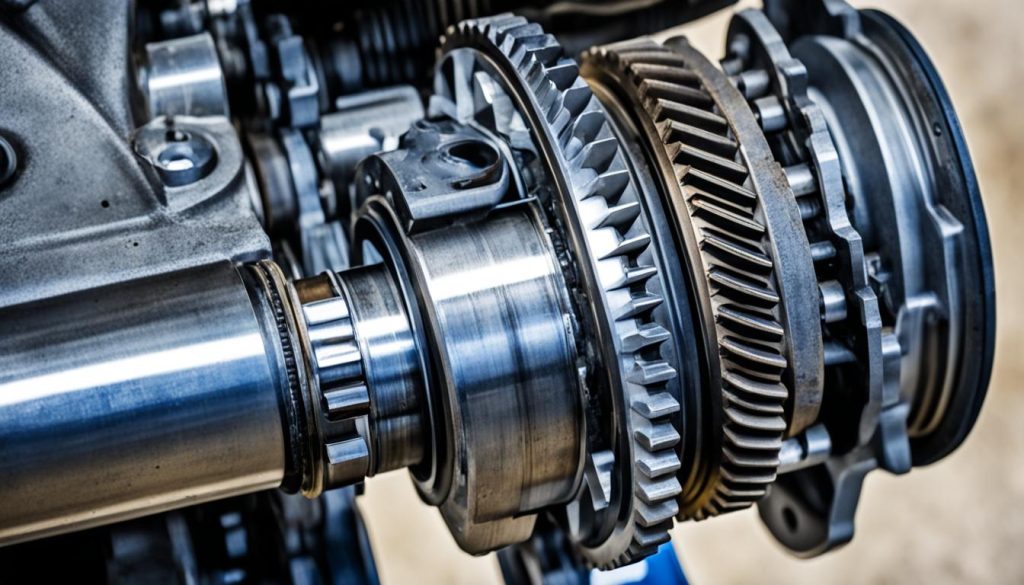
Essential Tools and Procedures for DIY Differential Rebuilds
If you’re ready to tackle troubleshooting your limited slip differential on the Ford Ranger, you understand the importance of being well-equipped. A DIY project like this is both challenging and rewarding, and with the right tools, you can fix those Ford Ranger rear end issues without unexpected setbacks. Let’s talk about the equipment you’ll need for differential repairs and guide you through the rebuilding process.
Selecting the Right Equipment for Differential Repairs
Embarking on the journey to solve Ford Ranger LSD problems begins with assembling the right set of tools. Without these, you risk incomplete repairs or further damage. First and foremost, you’ll need a dependable press for bearings — this is non-negotiable. Alongside that, make sure you have a set of dial indicators. Precision is key, and these indicators will ensure your measurements are spot-on. Lastly, torque wrenches will be your best friends when it comes to accurate tension settings.
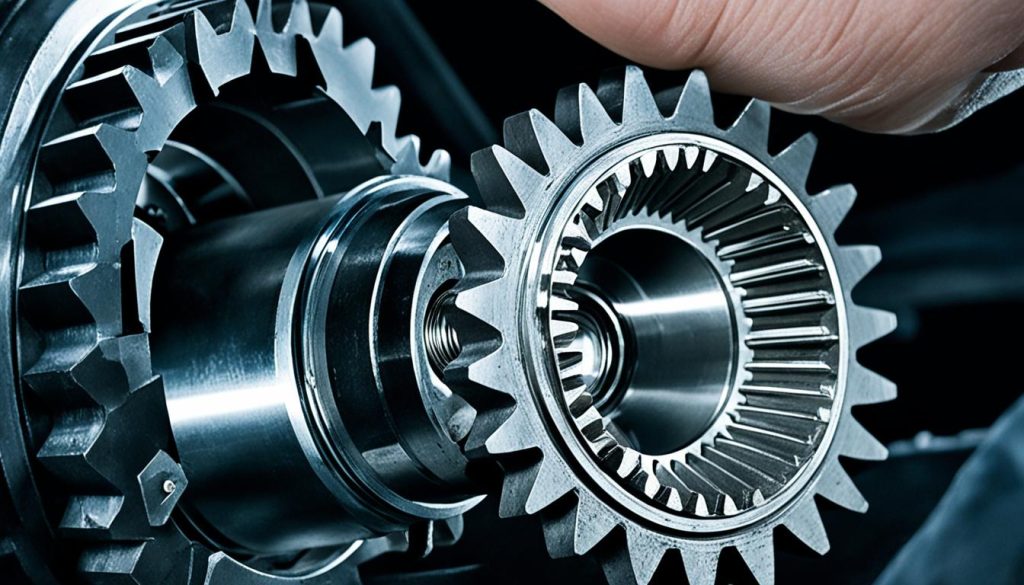
Step-by-Step Guide to Rebuilding Your LSD
Now that you have your tools laid out, it’s time to get down to the nitty-gritty of rebuilding your Ford Ranger’s LSD. Here are the steps you’ll follow:
- Check the Tooth Patterns: Before doing anything else, inspect the tooth patterns for wear and damage. This will hint at any underlying issues.
- Pressing Bearings: Using your press, carefully seat the bearings into place. Rushing this step can result in alignment issues later on.
- Setting Preloads: Ascend from smaller to larger tools as you set the pinion nut and preloads. Remember, precision is your aim.
- Aligning Gears and Pins: When you’re sure everything is measured correctly, carefully align all gears and pins. The spider gear center pins, especially, need your undivided attention.
- Spring Compression: Ensure all springs are compressed correctly for safe and functional operation
A note to remember, for those intending on long-term maintenance, a crush sleeve elimination kit could be a worthy investment. It simplifies adjustments and repairs down the line. Remember, accurate work here means fewer problems in the future.
Throughout the process, patience and attention to detail are invaluable. Each step is critical in remediating your Ford Ranger LSD problems effectively. Keep a steady hand and a keen eye through each phase, and you’ll have your Ranger’s rear end running smoothly in no time.
Preventive Measures and Routine Maintenance
Ensuring the longevity of your Ford Ranger’s limited slip differential (LSD) hinges on diligent maintenance and the use of correct lubricants. Whether you’re an avid adventurer or rely on your truck for daily tasks, being proactive with maintenance can fend off the common Ford Ranger LSD problems you might encounter. By investing a little time and attention now, you can minimize the risk of encountering Ford Ranger rear end issues and the dreaded differential noise that so often signals trouble.
Choosing the Correct Lubricants for Your LSD
One key to maintaining your LSD is using the right lubricants that meet your specific vehicle’s requirements. For example, a Ford Ranger FX4 from the year 2002 features a Torsen LSD that functions optimally with SAE 75-W140 Synthetic Rear Axle Lubricant – importantly, without the addition of friction modifier additives. This is not a one-size-fits-all; other Ford Ranger models with different LSD types may indeed need these additives. Be sure to review your owner’s manual or consult with a trusted mechanic to confirm the appropriate lubricant for your model to prevent Ford Ranger differential noise and ensure smooth operation.
Key Maintenance Practices to Extend Differential Life
Adopting a routine maintenance schedule is critical in mitigating Ford Ranger LSD problems and extending the life of your differential. Regularly checking and changing the oil will not only keep your LSD well-lubricated but also provide an opportunity to catch any wear or damage early. Keep in mind that every model may have subtle differences in maintenance needs, so staying informed about your specific Ford Ranger’s requirements is vital. By acknowledging these nuances and conducting periodic inspections, you’ll be taking a significant step toward safeguarding your truck against troublesome Ford Ranger rear end issues.
Preventive Measures and Routine Maintenance
What are common limited slip differential problems in the Ford Ranger?
Common problems with the Ford Ranger’s LSD include differential noise, clunking, and whining, particularly during acceleration or deceleration. These issues often point to worn clutch packs, bad bearings, or premature wear of other internal components.
How do I troubleshoot limited slip differential problems in my Ford Ranger?
Troubleshooting starts with listening for unusual noises or feeling for vibrations. If you notice problems, the next step is to inspect the differential fluid for metal particles and other signs of internal wear, and then check the differential clutches and bearings for effectiveness and wear.
What are signs that my Ford Ranger’s LSD needs a rebuild?
If your Ranger’s LSD begins to operate more like an open differential, with less resistance required to rotate a lifted wheel, or you notice a significant amount of whining, clunking, or grinding noises from the rear end, these are clear signs that a rebuild might be necessary.
What role does the LSD play in my Ranger’s performance?
The LSD in your Ranger helps to optimize traction and handling by minimizing wheel spin and ensuring balanced power distribution between the wheels. This is especially important in off-road or slippery conditions, where maintaining traction is crucial for control and performance.
What types of limited slip differentials are used in Ford Rangers?
Ford Rangers can be equipped with different types of LSDs, such as plate clutch, cone, and geared types. Each LSD has a unique mechanism but serves the same purpose of optimizing traction and handling by distributing torque to the wheels evenly.
Can you give an overview of how the LSD operates in a Ford Ranger?
The LSD in your Ranger is designed to detect differences in traction between the wheels. When it senses that one wheel is spinning faster than the other, it applies more torque to the wheel with greater resistance. This helps to minimize wheel spin and improve vehicle control.
What indicates wear or failure of the LSD in a Ford Ranger?
Unusual noises such as whining or clunking are key indicators of wear or failure in your Ranger’s LSD. Other signs include a lack of resistance when rotating the wheels by hand and inconsistent handling, especially when rounding corners or during acceleration.
How can I identify common symptoms like differential noise and clunking?
Pay attention to the sounds your vehicle makes during different driving conditions. Differential noise often changes with vehicle speed, while clunking may occur during gear changes or when starting and stopping the vehicle.
How do you diagnose LSD issues like whining sounds during acceleration and deceleration?
To diagnose such issues, you’ll need to inspect the differential fluid for contaminants, check the level and condition of the fluid, and evaluate the wear of internal LSD components, such as the clutches and bearings. In some cases, performing a torque wrench test on the LSD can help assess its condition.
What equipment is necessary for differential repairs on my Ford Ranger?
You will need a variety of tools, including a press for bearings, dial indicators for precision measurements, torque wrenches for accurate tightening, and possibly a specialized kit that eliminates the crush sleeve for easier future maintenance.
Can you provide a step-by-step guide to rebuilding my LSD?
While a detailed step-by-step guide is beyond the scope of an FAQ, rebuilding your LSD typically includes draining the fluid, disassembling the differential, inspecting and possibly replacing worn components, reassembling the differential with new bearings and seals, and refilling with fresh lubricant.
How do I choose the correct lubricants for my Ford Ranger’s LSD?
Consult your owner’s manual or a trusted mechanic for the exact specification of the lubricant for your particular model and type of LSD. Some may require synthetic gear oil with specific additives, while others do not.
What are the key maintenance practices to extend the life of my Ranger’s differential?
Regular inspections, maintaining proper lubricant levels, using the correct type of lubricant, and timely replacement of worn parts are integral to extending the life of your Ranger’s differential. Regular fluid changes can also help prevent buildup of contaminants that can lead to wear.

